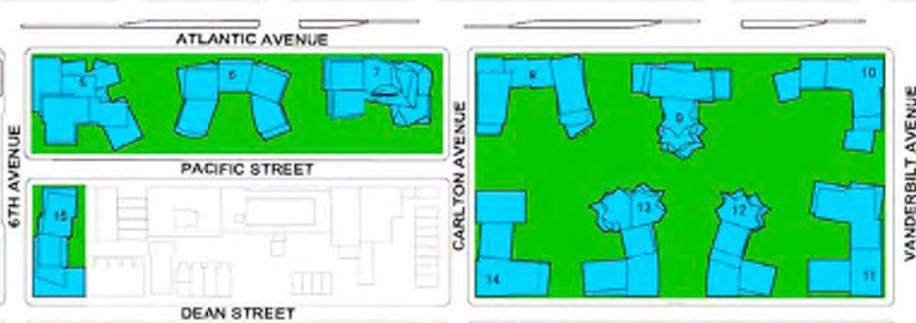John Petro
A Sad Day for Brooklyn: Atlantic Yards Groundbreaking
In theory, it should be everything that a progressive urban policy analyst like me would want from a new development. Atlantic Yards would create lots of new housing immediately adjacent to mass transit lines. It would be a mix of residential, commercial, retail, and entertainment space. And it would create new affordable housing and green space.
But, somehow, Atlantic Yards developer Forest City Ratner got it all wrong. The project required two things to make it feasible: the use of eminent domain to acquire the property and hundreds of millions of dollars in public subsidies. Public officials justified both by proclaiming that the project would also create public benefits. But these public benefits were always dubious. And as the project has progressed, they have all but disappeared completely. Now it seems that the project will be a money loser for the city and will scar the face of Brooklyn for decades.
So what went wrong?
First and foremost, the moment Forest City Ratner turned to New York City and the state for the use of eminent domain and public subsidies, Atlantic Yards became a public project. This fact has been ignored by the developer and by the public officials who have backed it. In fact, Bruce Ratner, chief executive of Forest City, proclaimed last year, "Why should people get to see plans? This isn't a public project."
Because the public--most importantly, those in communities surrounding the project site--were not adequately involved in the planning of Atlantic Yards, opposition to the project was fierce and unyielding. This opposition caused a string of delays that would eventually force the developer to put plans for office and housing towers on hold indefinitely. The result was, to the extent that there ever were any public benefits, those benefits have now disappeared.
While it was always uncertain just how "affordable" the affordable housing was going to be, it is now unclear if and when the affordable housing will be built. There is also the very real possibility that the developer will need substantial public subsidies to build the affordable housing.
And while the amount of public tax dollars going to subsidize the project has more than doubled, from $100 million to at least $205 million, the amount of tax revenue that the project was estimated to generate for the city and state has shrunk by half a billion dollars. This is largely due to reductions in the amount of new office space that was going to be included in the project. Now there are no immediate plans for any new office space. According to Crain's New York Business:
Initially, the project called for four office towers, but by early this year, only one was on the drawing boards. Asked when it will go up, Mr. Ratner responds with a question: "Can you tell me when we are going to need a new office tower?"
No, I can't.
On top of that add the loss of an "iconic" design by Frank Gehry, a smaller rail yard than was initially agreed on, and instead of paying the cash-strapped MTA $100 million in cash as was promised in 2005, the developer will pay $20 million up front and the rest over 21 years.
But the real kicker is how the project will create blight, instead of eradicating it. The project is adjacent to some of the most successful pedestrian-oriented neighborhoods in the entire city: Park Slope, Prospect Heights, and Fort Greene. But instead of incorporating the characteristics that make these neighborhoods so successful, Atlantic Yards relies on an urban design that has been thoroughly discredited in cities across the globe.
The development will have many of the design characteristics of the public housing projects constructed in the early 20th Century. Local streets will be permanently closed, creating superblocks that will discourage pedestrian activity. Instead of mimicking the commercial corridors of nearby neighborhoods, like Park Slope's 5th Avenue, the new towers will be surrounded by "open space" that will create pedestrian dead zones and will be intimidating during the night. Think of the unused and often unsettling green spaces between public housing towers and you will begin to get the idea.
The Atlantic Yards site plan. Note the "open space" in green and how it evokes the worst in public housing design.
And instead of promoting the use of mass transit, the new development will actually promote the use of private automobiles. The development will create 3600 new parking spaces, 2600 for residents and 1100 for the arena. Even worse, because the development of some sites will be delayed indefinitely, there are plans for a 1044 space interim surface parking lot. That's a lot of asphalt. It's also what I would call blight.
The official groundbreaking ceremony was held on Thursday. No doubt there were smiles on the faces of Bruce Ratner, Mayor Bloomberg, and Governor Patterson. The smiles are temporary, but the scar etched onto Brooklyn will be much more permanent.
John Petro: Author Bio | Other Posts
Posted at 10:10 AM, Mar 12, 2010 in
Permalink | Email to Friend











